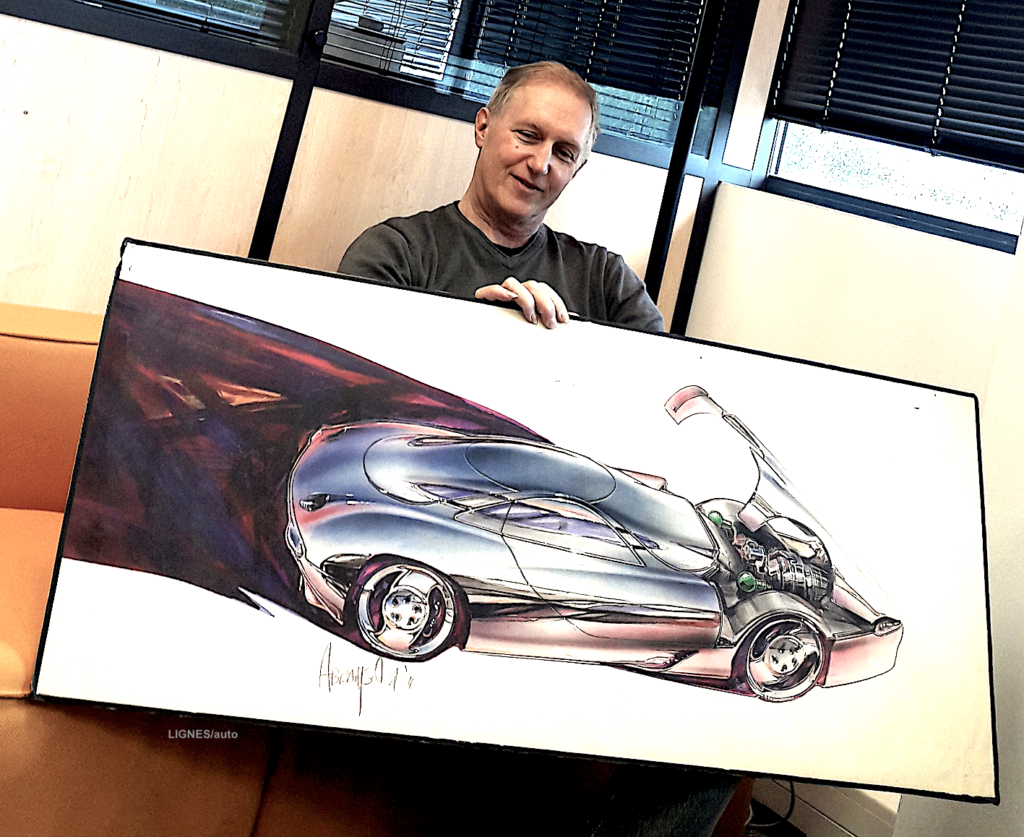
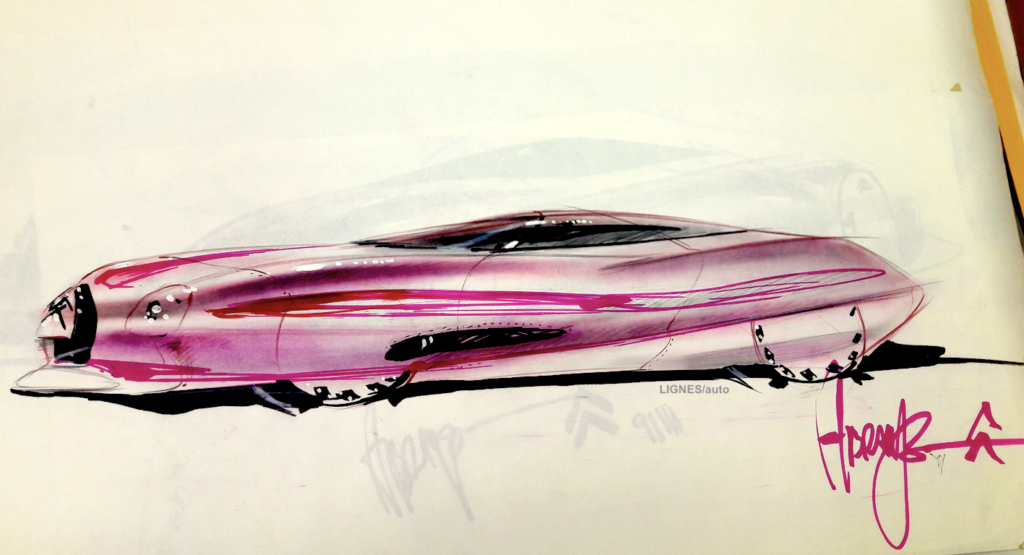
Dan Abramson is one of the great designers of the Citroën era from 1983 (advanced design) to 2007. He is known for his work on the two concept cars Activa and Activa 2 – from 1988 and 1990. But he has worked on many other works as we will discover. Today design director of RCD Except (see our post on this company), he comes back for you on his work for the French manufacturer.
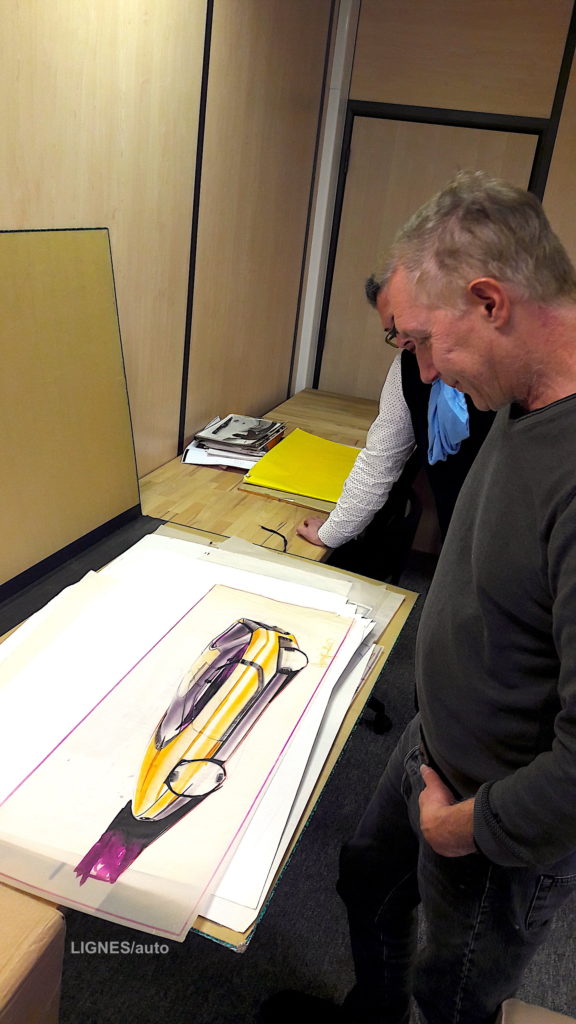
LIGNES/auto: You arrive at PSA through the advanced style office located in Carrières-sous-Poissy ?
Dan Abramson: “Yes, I came there in 1984, after PSA acquired Chrysler Europe. The French group set up this advanced styling studio and Arthur Blakeslee took over. He had just followed the genesis of the Talbot Tagora at Withley in England.”

Prior to this programme, Blakeslee is said to have worked on the project for a Chrysler compact van that would have inspired the designers of the Renault Espace ?
D.A.: “Yes, I seem to remember the project was called Super Van, and there were Curtis Gwin and Geoff Matthews on that program which was managed by Arthur Blakeslee. He showed me a lot of pictures of the vehicle that was an early Espace.”
At PSA, what is the relationship between your Carrières-sous-Poissy studio and the two Citroën and Peugeot styling centres ?
D.A.: “There is none with Gérard Welter… Arthur Blakeslee’s intention was to form an advanced design centre. So we compete on current projects. At the time, we worked on the Peugeot 405, in competition with Peugeot and Pininfarina, and on the 309 (below)”
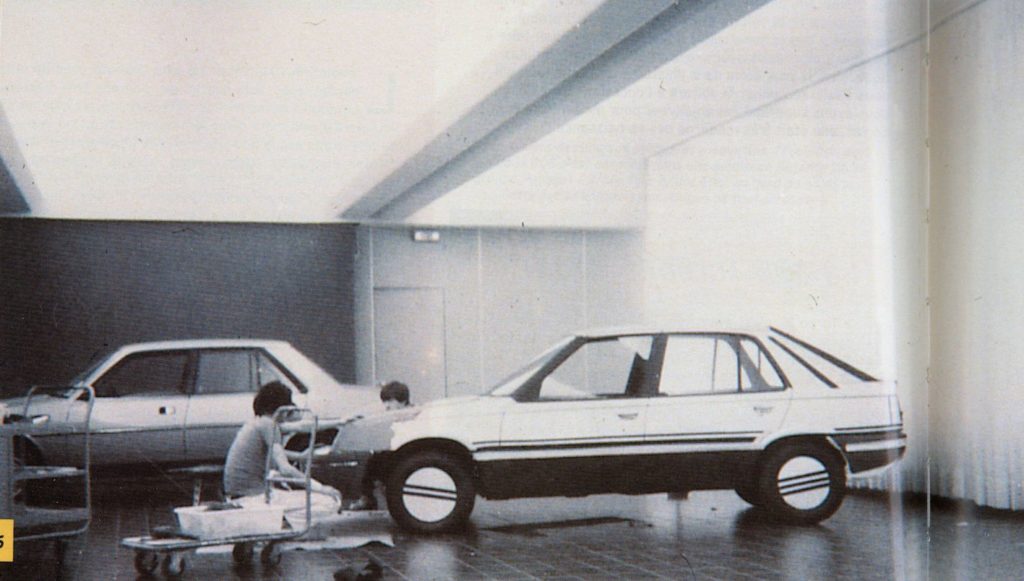
“The only time we meet – in the elevator ! – is when we present our models on the terrace of La Garenne. Arthur Blakeslee doesn’t speak French very well and it seems to me that he is not treated with the respect that we owe him. I’ve always found that damaging, because he’s a brilliant designer, but it took him a long time to impose his ideas. At the same time, I understand that Carl Olsen (head of Citroën styling from 1982 to 1987, below in the middle between Geoff Matthews and Jean Giret) was fired precisely because as head of styling, he imposes his ideas, which doesn’t please Luc Epron, marketing manager. Citroën’s marketing at the time was very strong.”

When do you get to Citroën design ?
D.A.: “In 1987, at the same time as Arthur Blakeslee took over as head of the Citroën style. There was already Donato Coco, Michel Albertus, Jean-Claude Quinet and even Jean Giret !”
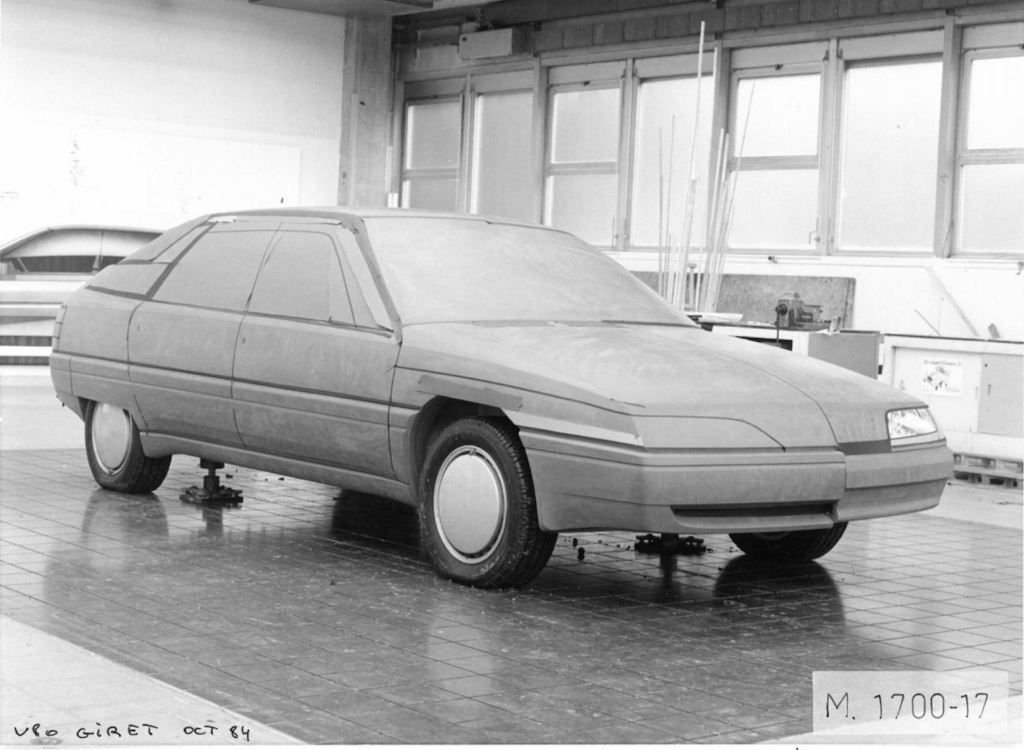
What was your relationship with Jean Giret, a man of the Robert Opron era ?
D.A.: “Jean Giret was then an expert in plaster modeling. He was working on the Axel when I arrived at Citroën. He seemed like an old man hanging around the studio. He doesn’t have many projects on the go. I remember showing him a foam model of the early days of my work on Activa because I had a good relationship with him. Jean Giret’s last work was his model for the XM program.” (above)
So you knew about plaster at Citroën ?
D.A. “Yes. But Arthur Blakeslee thought this material was ancient, certainly quite noble, and he wanted to impose the clay that is in American culture.”
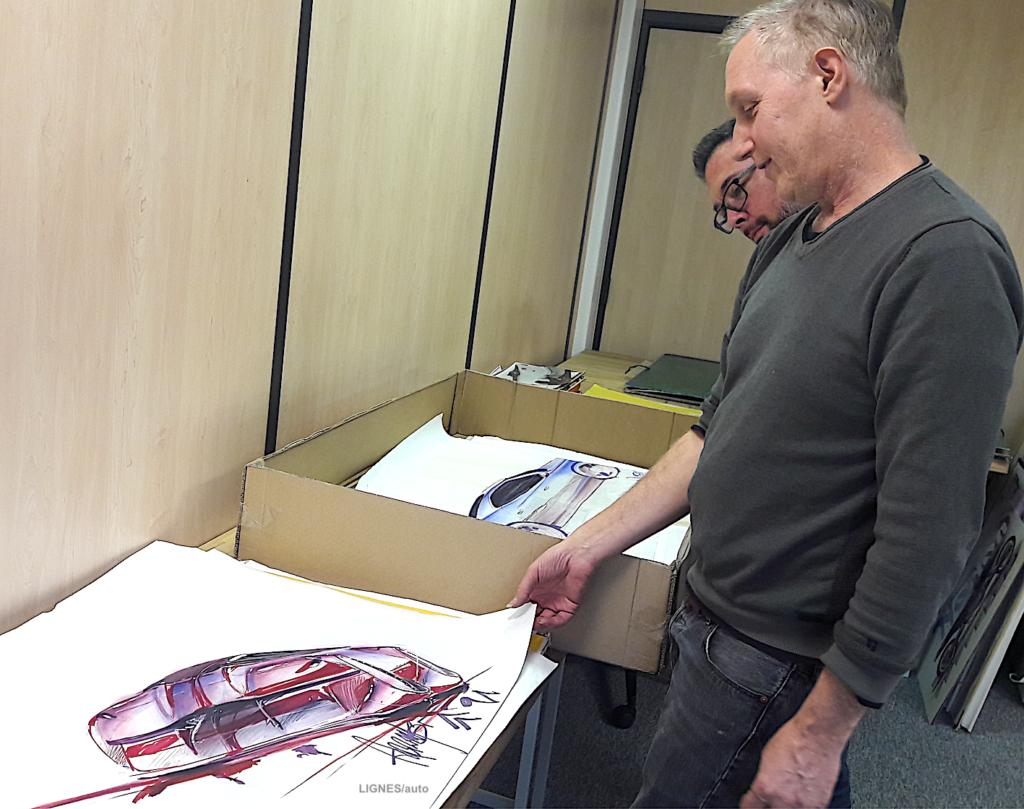
In 1987 when you arrived, you discovered the competition with Bertone’s studio in Turin ?
D.A.: “Philippe Couvreur managed relations with outside suppliers. PSA had signed a sort of annual contract with Bertone which required the Italian to do work for Citroën programmes. I didn’t see any problem with that. But I think that, in front of Bertone, we were trapped by our clay models…” Below, Bertone’s model for the XM program…
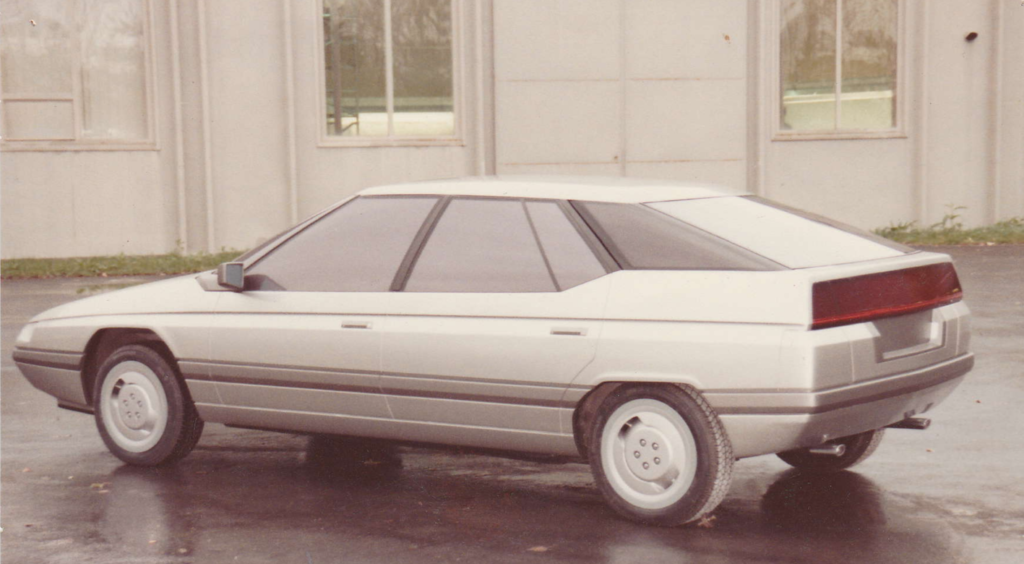
Trapped ? In what way ?
D.A.: “Jacques Calvet and some decision-makers didn’t find the clay precise enough. One hot day, Calvet stuck his thumb into a Clay model of one of our proposals for the XM, with a grin. He preferred plaster models ! Bertone made his own with a rather exceptional finish, made in chrome-plated brass and the joints were superbly engraved. We could touch the model without fear, our decision-makers found it “solid”! Ours were just as expressive, but we worked on them all the time, and sometimes they were full of tape, we made them evolve every day !”
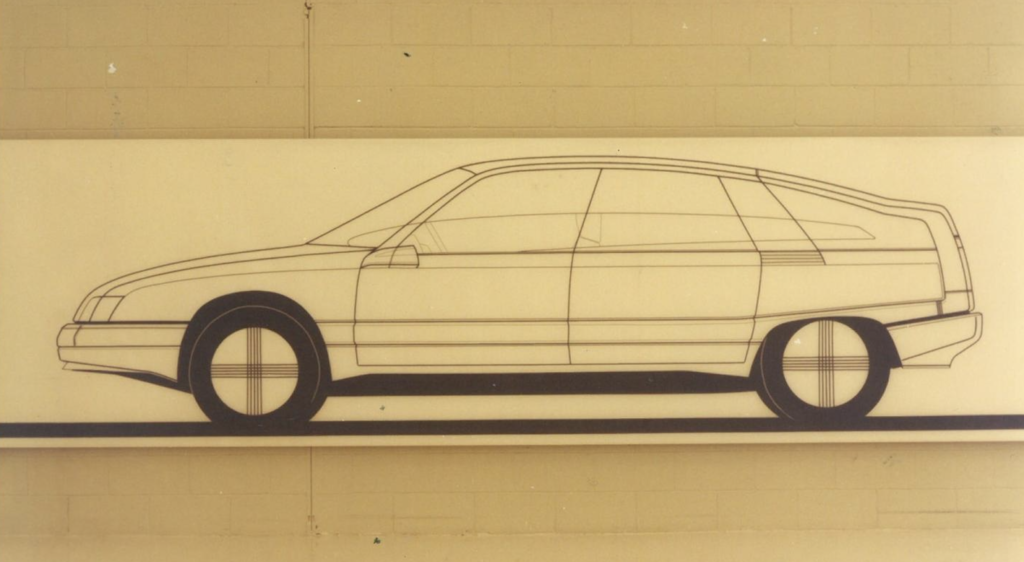
For this XM project, there were an unbelievable number of PSA models?!
D.A.: “Yes, we did too many ! We didn’t manage to concentrate on a single design, unlike Marc Deschamps at Bertone who stayed focused on a single proposal. Blakeslee’s idea was always to make many proposals, sometimes up to eight models. It’s a very Anglo-Saxon method !”
Before this work on the XM, you designed the Activa for the 1988 Paris Motor Show.
D.A.: “Citroën had the idea of doing something very top-end on the platform of the XM in gestation. I was leading the team dedicated to the top of the range and Blakeslee came to see me to tell me that there was a proposal for a show car on the “Y” platform. That’s how it started.”

“Almost everyone was working on it at first, even Donato Coco, but I drew a lot of sketches, one of which was chosen by Blakeslee. After the small 1/5 scale model I made in foam, at home I was lucky enough to have Ray Downes, the “feasibility” manager for phase advances, by my side.”

“This guy was amazing, he was tracing sections of the pillars or the rocker panels by hand, it was fabulous. With him, I made the 1:1 scale model that was milled at Bernard Pene in MBPM, in the old Solex factory building, right next to Delage!”
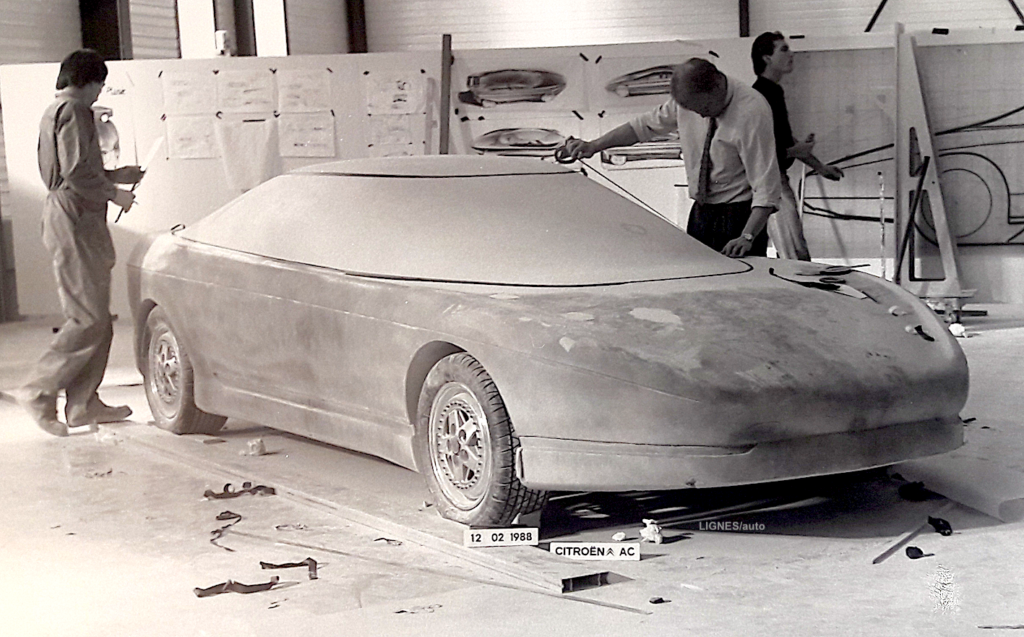
It is the time of the 1988 Paris Motor Show where it is exhibited with the Peugeot Oxia and Renault Mégane. There was a lot of technology on board these concept cars !
D.A.: “All the technical part of the Activa was mastered at La Garenne with Vincent Soulignac’s team. Everyone there did an incredible job ! The suspensions worked, as did the by wire controls. We worked with a company in Vélizy who developed this technology for Airbus. There must have been about a hundred people working on the project. They even cast a specific block to be able to install the engine lower down in the chassis. The group put a lot of money into this concept.”
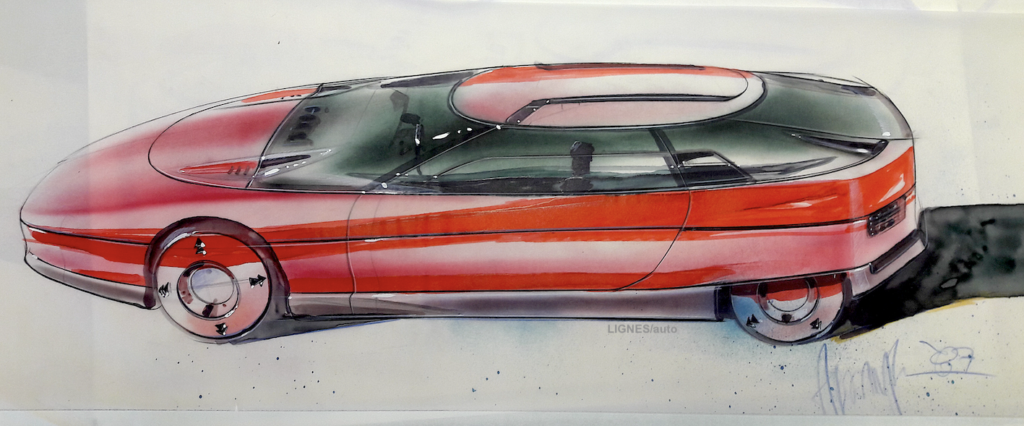
Two years later, you designed the Activa 2. Was it Citroën’s intention to eventually produce a top-of-the-range coupé ?
D.A.: “No, that was never mentioned. The Activa 2 was born during my holidays in the Cévennes. I sculpted a 1/5th scale model of a coupé in my corner. For fun ! And with Mark Lloyd who was on my team, we worked it with two different flanks before presenting it to Blakeslee and then to Luc Epron. The idea was to come up with a pretty high-tech study. Then we made the 1/1 scale model, the only one Calvet had seen…”
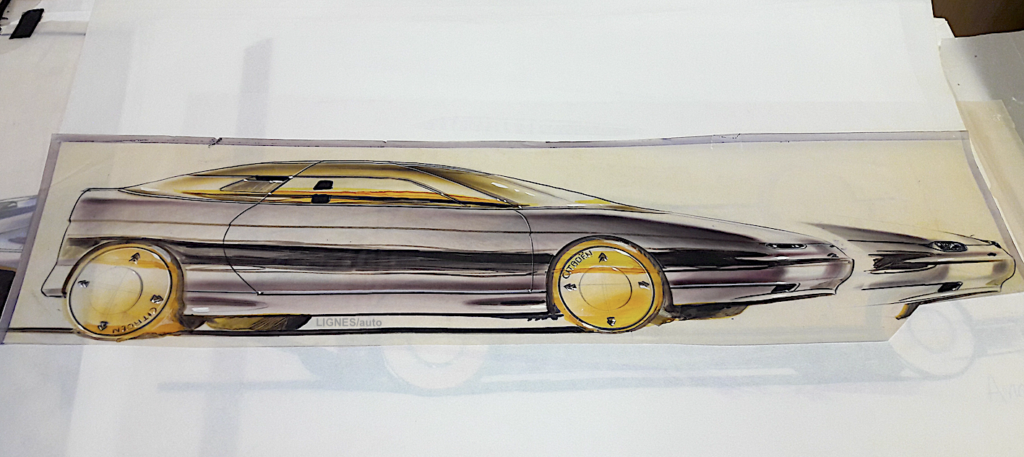
and the optics come out and literally open the shield !
Jacques Calvet gives the go-ahead then ?
D.A.: “We showed the model to Jacques Calvet. It was Bernard Pene who had milled it out of resin and it was painted grey. We knew he wanted to present a show car in Paris in 1990. He was surprised ! We said to ourselves that he wouldn’t choose a project like that because we obviously thought it was prettier than the XM in gestation ! But he validated it. He preferred the soft lines of the Activa 2 to the slightly choppy lines of the XM. So he gave the go-ahead, but for a concept, not for a production coupe. We had to soften the lines that were a little far away from the future XM, especially the belt line, which had a more pronounced upward bend in the rear, like on the XM.”
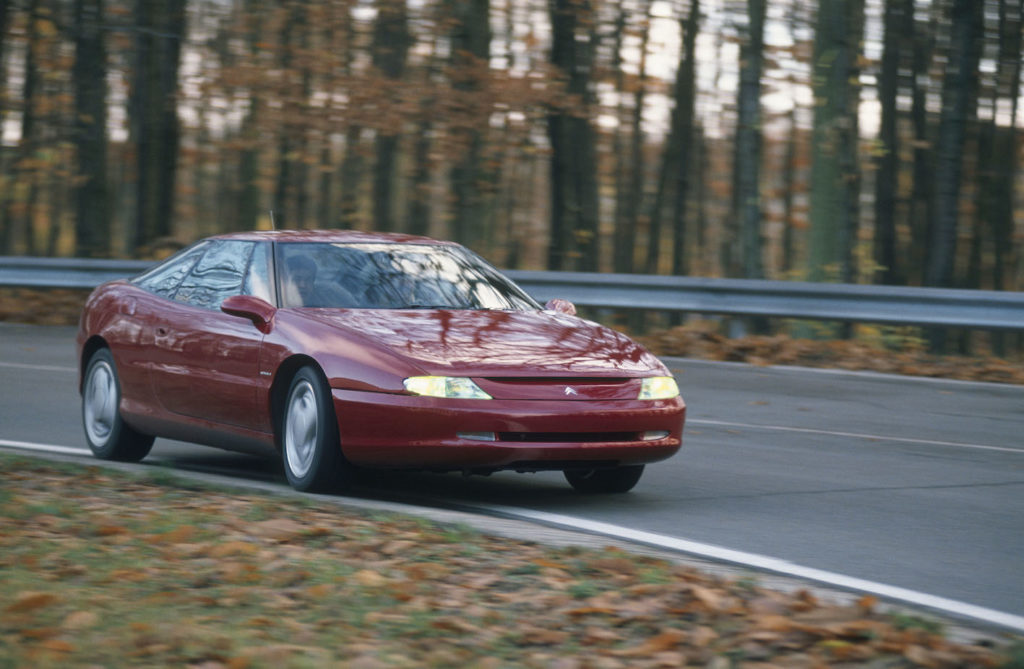
It seems to me that Xavier Karcher, at the product, had envisaged the production in small series of the Activa 2 ?
D.A.: “Karcher started the rumor that Bertone would produce it. It’s true that the Activa 2 is one of the most beautiful cars we’ve ever made. But the only reason Bertone was actually mentioned was to make the concept car run. Bertone molded the car and hit the whole body in sheet metal on an XM chassis. That’s when I became friends with Marc Deschamps. He stayed in his role, never changing anything in style and guaranteeing Bertone quality on the rolling prototype.”
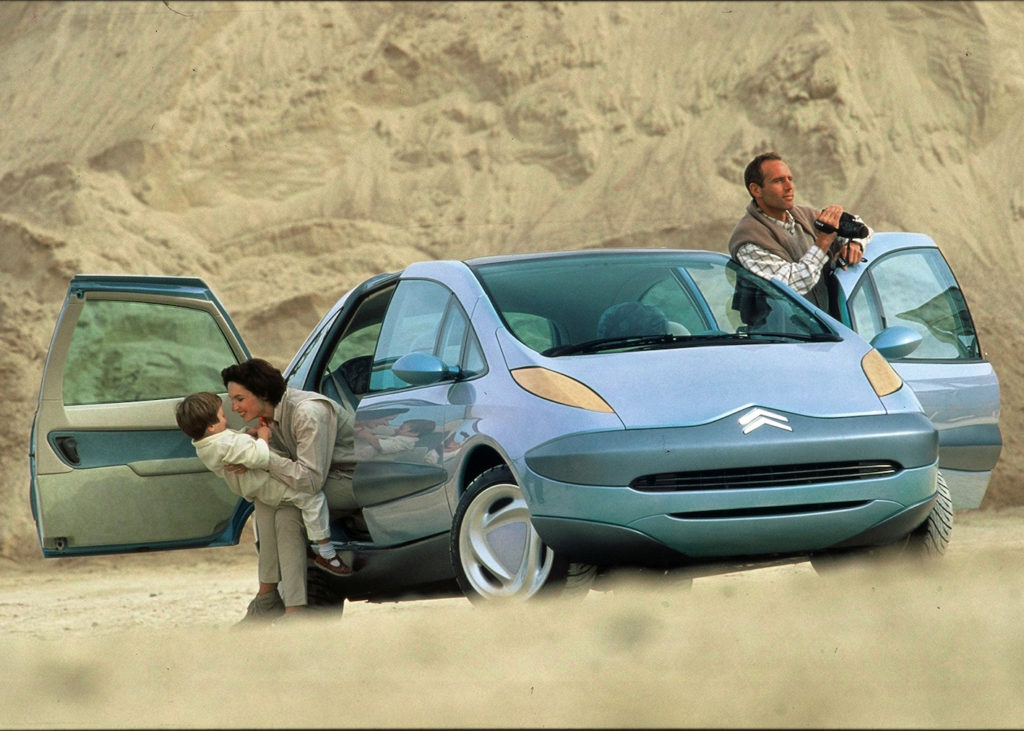
In 1995, you manage the Xanae concept car, the MPV sedan (above)…
D.A: “Citroën knew that Renault was preparing the launch of its Scénic compact MPV and the management wanted to show that the brand was alive ! As the chassis is with hydraulic suspension, the project falls in my team. Mark Lloyd is working on the exterior styling, Marc Pinson on the interior. We make a lot of drawings, a 1/5 scale model and then a 1/1 scale model. All the work is almost finished when, at the presentation of our concept car, we learn that Luc Epron’s team has asked Antoine Volanis (ex-Matra designer) to make his own proposal. We are extremely surprised because for a concept car, we don’t usually consult outside…”

That’s what’s going to bring Citroen to trial…
D.A.: “In fact, Antoine Volanis had presented a project to La Garenne for a compact-MPV. Each of his designs was numbered and protected, but we never saw them ! The worst thing was that the person in Luc Epron’s team in charge of liaising with Volanis informed him of the progress of our own work ! The problem at the time was that we didn’t protect our drawings. Philippe Couvreur, who managed the external collaborations, was trapped by Volanis who considered that his project had been plagiarized by Citroën ! What’s incredible is that we only saw Volanis’ model during the final presentation and it was ours that was chosen. Furthermore, it should be noted that when a consultant presented a model at the time, it became the property of the group… but with Volanis, PSA had obviously not protected the deal. So the group put together a file with us, with all our sketches, and thus demonstrated that Citroën’s drawings and models had all been created six months or even a year before Volanis’ proposals. But since our drawings had not been filed, Volanis won his case.”
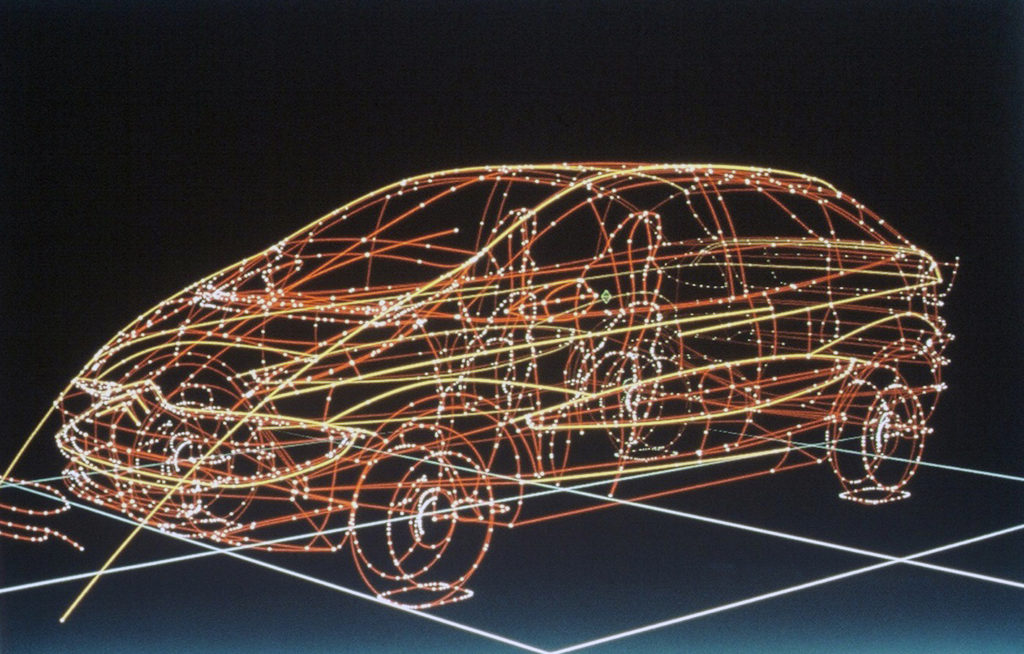
You are in charge of the project that will give birth to the first generation of C5. A disappointment, you say ?!
D.A.: “For the project of the first C5, Luc Epron wanted the largest possible interior volume on the platform. We made a very aesthetic model, without a boot. A hatchback made by Mark Lloyd, almost a four-door coupé with a window upstream of the front door and a very advanced middle leg. It was dynamic. But everything went wrong…”
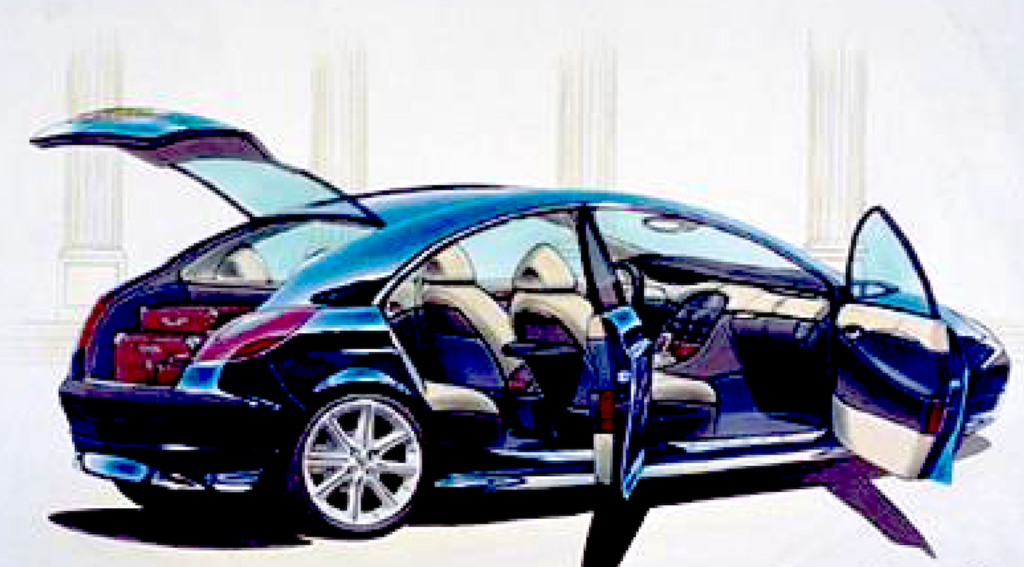
“First, Luc Epron asked for a trunk to be added, then the aerodynamics guys brought up the rear, Epron wanted even more space in the back, then they removed the front window for cost reasons. So they moved the windshield pillar back… All the chrome decorations disappeared, and at the time of the pre-series, they raised the plate by 25 mm, and I think there were even versions with 14-inch wheels. In short, a thousand modifications that broke the car’s balance. What’s more, the project manager didn’t defend it ! But it still sold better than the current C5…”
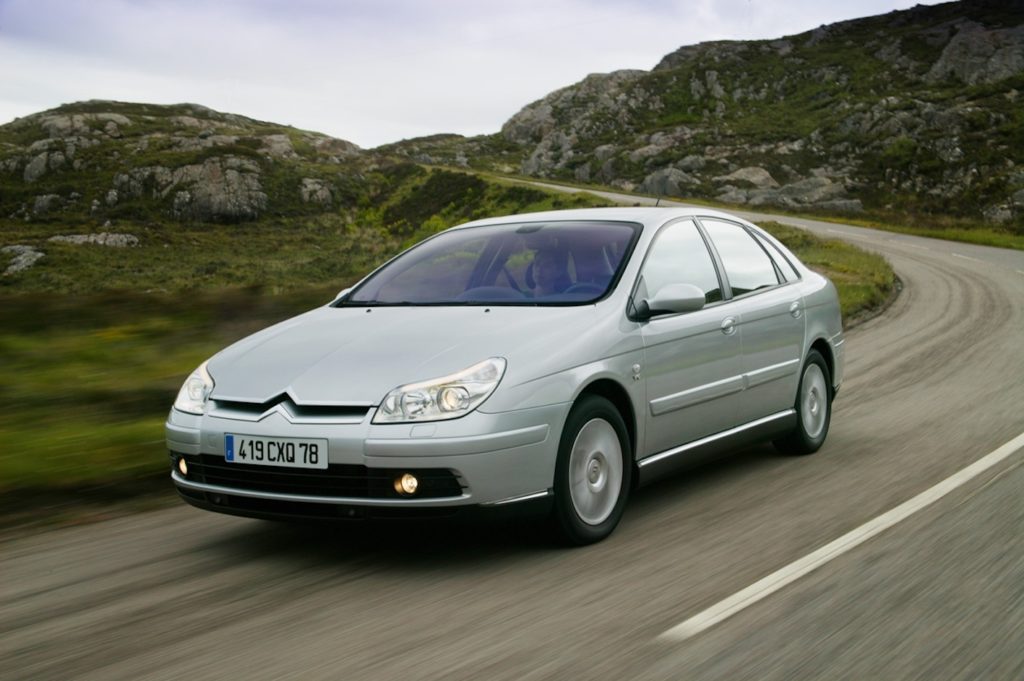
In 1999, when Jean-Pierre Ploué took over from Arthur Blakeslee, what was your state of mind ?
D.A: “Blakeslee gave my name for his replacement, but we knew that PSA wasn’t going to choose another Anglo-Saxon ! Three years earlier, the group had contacted Victor Nacif. But three years before, it was much too long and Victor was finally not chosen, to his great disappointment. Claude Satinet, Citroën’s boss at the time, said he didn’t believe that someone from inside the company could take the job. But then again, it’s normal that the group chose someone from the outside. And it was also at that time that Robert Peugeot became head of the design offices. He liked Gerard Welter, minus Arthur Blakeslee…”
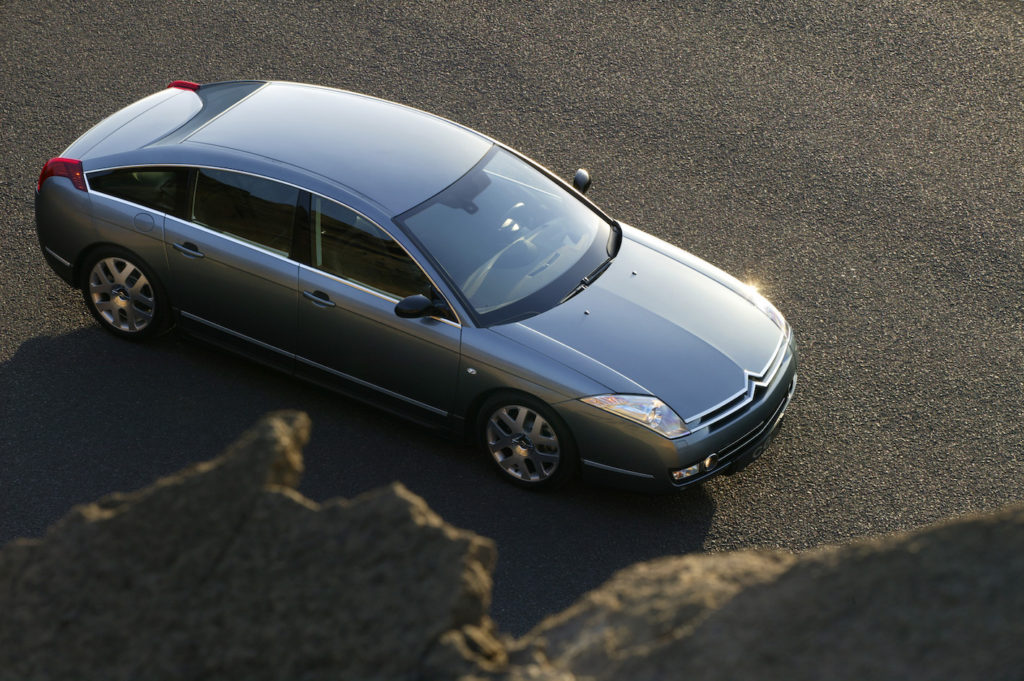
You leave Citroën in 2007, after managing the C6 program (above) …
D.A.: “When Blakeslee left, I knew I wasn’t going to stay… I was a very good friend of Arthur, his wife often took care of my children. The C6 was almost finished before Ploué’s arrival, since before my departure, I was still following its pre-production at the Rennes factory, and I was working on the renewal of the Berlingo. Jean-Pierre let me present the projects of the C6 or the Berlingo B9. He was even satisfied with the work my team did on the restyling of the C5. But it’s normal that he wanted to get involved in a project of his own, with his new team: it was the new C5 that he entrusted to Alexandre Malval. So I’m leaving Citroën when the C6 is launched, after 24 years.”
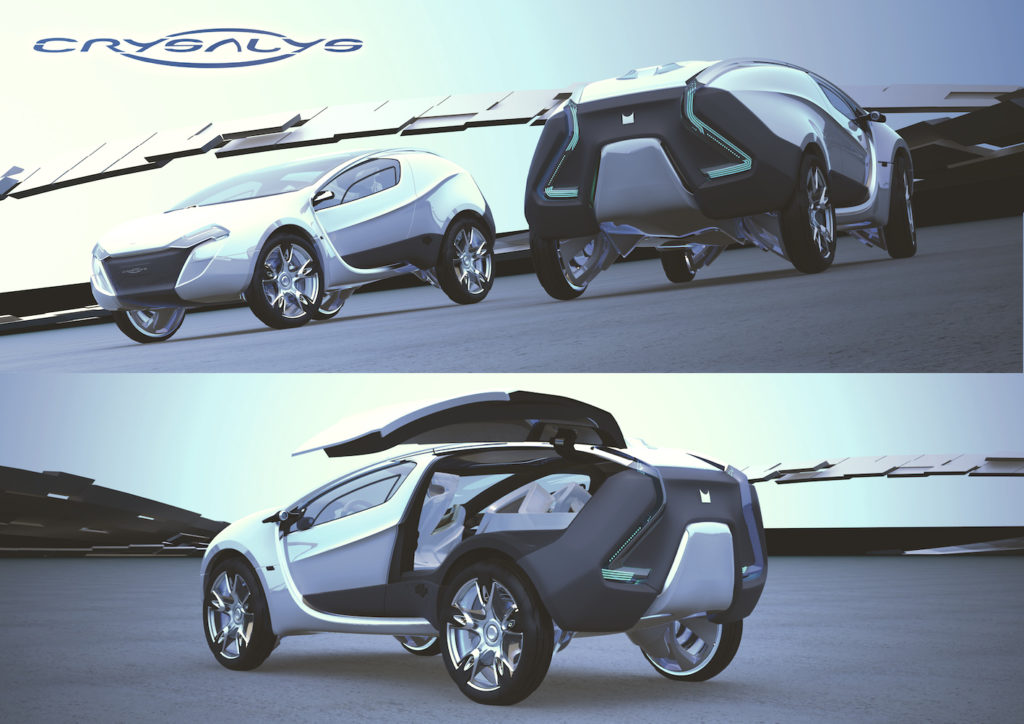
After a sabbatical year, Dan Abramson became a shareholder in an Italian company (Linea-Gam) with, as a model maker, undoubtedly one of the biggest on the automobile planet: Victorio, former undisputed master at Ital Design. Dan Abramson’s career then crossed paths with the Duarte company (1,400 employees at the time) and continued at Estech. It is there that Gilles Vidal puts his trust in him and the manufacture of the concept car… GTbyCitroën, of 2008 will thus be the first concept made by Estech. It is here that Dan also creates the Chrysalis concept (above: exterior design, below: inter design).
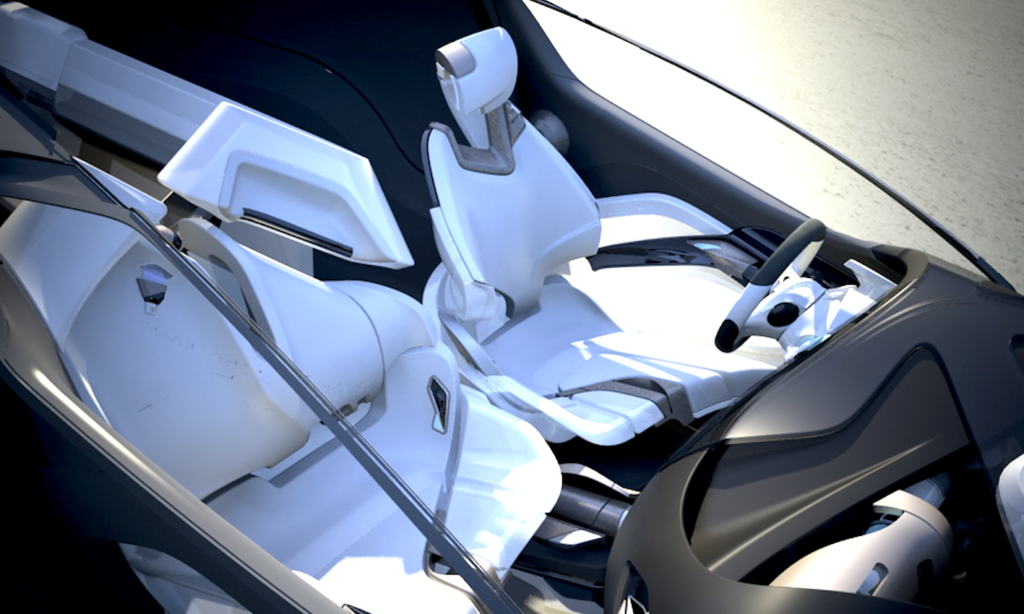
In 2011, he joins the ranks of RCD as design director : http://lignesauto.fr/?p=16310 or click on the picture below

Propos recueillis par Christophe Bonnaud

